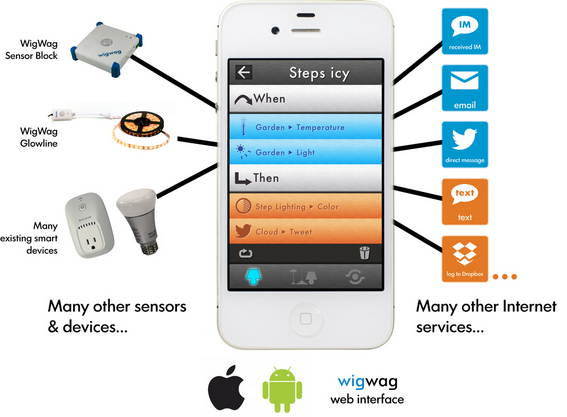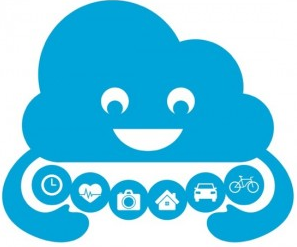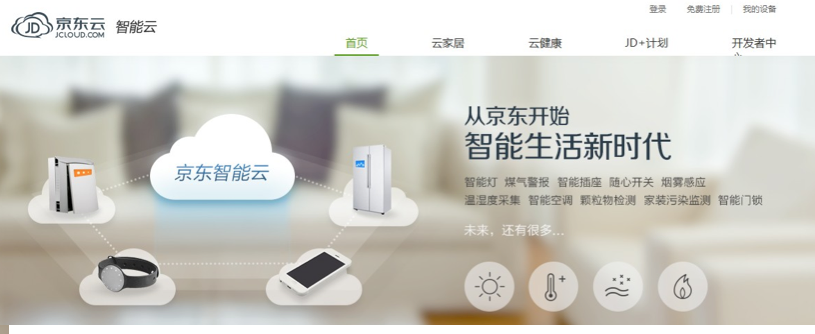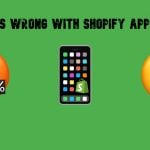Internet of Things and E-Commerce
The internet as we know it has significantly changed the way we live and work and, what’s more important, it changed our attitude to it. It’s no more just a huge source of information; it’s the way of being aware of all the possible aspects of reality surrounding us anywhere and at any time. However, it’s not quite possible unless all the objects of the real world are literally connected to the Internet itself. The impetuous progress in the sphere of wireless networks, together with the incredible growth of digital data, has contributed to the development of the Internet of Things.

The impact this concept can have on the society is potentially so immense that, having reached the peak of its development, it can basically reconstruct all the available technologies into completely autonomous and remotely manageable things. With such a tendency going on, quite bright prospects await companies and enterprises involved in online market today. Here you’ll find out how Internet of Things can revolutionise the world, and more specifically, the world of e-commerce.
Table of contents
- What Is the Internet of Things
- Possibilities of the IoT application
- Big Data, the Internet of Things, and business
- Business concerns with the Internet of Things
- How to get ready for the era of the IoT
- Cloud as the primary IoT realization
- The IoT and consumers
- Other advantages of the IoT for your business
- Examples of e-commerce companies successfully integrated into the IoT
What Is the Internet of Things
The Internet of Things (or simply IoT) is the network containing real objects – either devices or humans – that can capture data, analyze it and exchange it among themselves in the wireless way. The important conditions of the IoT existence are:
- IoT objects must be electronically equipped;
- IoT objects have to be capable of capturing and analyzing the information about themselves as well as about the outer environment;
- IoT objects should have corresponding software so that they could be properly operated;
- IoT objects should have an access to the Internet to distribute the captured information through the network.
Humans (and even animals) by themselves cannot be considered as IoT objects until they’re equipped with electronic devices that can function as such. For instance, heart implant devices are IoT things as they monitor the heart condition of a person and can transfer this data to other devices. Moreover, by means of these heart implants, it’s possible to find the exact location of the person himself/herself at any particular moment. As for other potential examples of IoT objects, it can be any goods, vehicles, appliances, buildings, plants and many more.

IoT
To become available for the Internet of Things, an object has to acquire a unique identifier. It can be managed through different technologies including RFID, near field communication, digital watermarking, QR coding, or IP addressing. In fact, the latter would provide even more convenient way of identification. However, IPv4 would not be enough for the individual identification of multiple things in the IoT due to the certain limit in address space. IPv6, on the other hand, is capable of generating a greater amount of unique addresses which could presumably support the IoT for many years of systematic expanse.
The basic IoT objects already exist in a form of autonomous oil and gas utilities, kitchen appliances (Wi-Fi controlled dishwashers and dryers), and smart power grids which work on the basis of digital data to improve the efficiency and sustainability of electricity supply.
Though requiring wireless connectivity, the IoT itself can exist in different forms. For instance, all the services and apps integrated in the Internet of Things can be stored either in clouds, or on local devices, or on specific data centers. The aim is to provide it with far-reaching properties.
Possibilities of the IoT application
Because of the fast-growing emergence of new technologies, we can assume that by less than a decade the Internet of Things can expand to inconceivable proportions. There is going to be ten times more devices capable of connecting to the unified network of things, which will result in a huge success literally in all the fields of human life. Individual specifications of a device connected to the IoT are not important at all, which means that no matter how small information collected by a certain device is, it is inevitably going to be stored in the huge network and become available for every other connected device. As a result, the Internet of Things can be handy everywhere:
Transportation
The IoT can collect and process information about various transportation systems providing safer and easier way of vehicular traffic management, convenient interaction between traffic participants, smart parking and effective road assistance.
Building construction and autonomous housing
IoT connected devices can provide efficient control of electrical, electronic and mechanical systems in all types of buildings as well as autonomous operation of in-home utilities, such as lighting, heating, air conditioning, communication systems etc.
Medicine
The IoT also has a potential to improve the healthcare system by introducing remote health monitoring which can effectively support proper functioning of patients’ implants. Moreover, sensor systems, if installed in hospitals, could monitor the health condition of the people and immediately react to emergency situations.
Energy consumption
Equipment of electricity consuming devices such as TV-sets, electric heaters, and light bulbs with sensors and remote control systems will help to sufficiently reduce energy Industry
By establishing networking machinery with sensor systems on factories and manufacturing plants there is an opportunity to produce products of incomparably high quality. The manufacturing speed will increase as soon as there is IoT intercommunication between industrial equipment.
Environment control
With the help of IoT objects it is also possible to monitor the condition of the outer environment including water quality, the level of soil and atmosphere contamination, etc.
Media
The Media decides to reject traditional ways of interacting with society in favour of technologies that allow reaching specific audience faster, easier and at any particular moment. This creates another possibility for the Internet of Things to take over the leading role in the field.

WigWag IoT App
Big Data, the Internet of Things, and business
While online environment is getting overfilled with information about people and their activities, the resulting overall data set transforms into Big Data. The most interesting thing about Big Data is that it’s capable of regulating tones of information from seemingly incompatible sources so that it could be properly examined by users. Such massive abilities can make Big Data successfully adopted by numerous industries and commercial organizations to improve their work.
In fact, Big Data and the Internet of Things are closely connected, because a consequence of never-ending functioning of interconnected devices is a huge amount of data. The access to Big Data will reveal unlimited opportunities of measuring, collecting and analyzing the behavioral statistics to perfectly meet the needs of consumers. In terms of marketing, being able to reach the devices of people with certain interests will help to determine the most appropriate advertising schemes.
Together with progressive advances in other fields, including manufacturing and transportation, Big Data and the Internet of Things will eventually stimulate the stable economic growth. On the local level, each company has a chance to advance in its own growth and increase competitiveness in the global market.
(video)
Business concerns with the Internet of Things
To get the full profit from the IoT in business certain problems should be solved, such as insufficient data security, slow data flow response, considerable information volumes, and its immediate management. Both IT enterprises and retailers have to join their forces to efficiently solve these problems. It’s also important to realize that for internet marketing in the world of the IoT the emphasis must be put on the objects that are most commonly used by consumers, and these are nothing else than smartphones.
The problem with huge data flow, for instance, can be considered solvable, and this was proved by Hadoop framework that has managed to successfully deal with big data analytics software by distributing it on computer clusters built from commodity hardware.
at Bloomberg (video)
How to get ready for the era of the IoT
Analytics must be the main concern of every enterprise if there is a need of gaining maximum of financial benefit in the sphere of the IoT. To develop the most efficient data processing environments, several main steps should be taken:
- Working with new sets of data that include physical geographic location and sensor information require storage systems other than traditional ones, as more space and processing speed is required.
- A better network bandwidth is what real-time measuring systems will require, like, for example, capturing of constantly changing weather conditions.
- As IoT objects are basically various kinds of electronic devices, there is no universal data format, which can become messy when dealing with multiple formats at a time.
- Already existing developer kits will be handy to elaborate effective IoT utilities that can not only collect data but also ‘filter’ it to be properly visible through the network. To handle this, smart gateways can be developed, so that both old and new IoT devices could flawlessly interact with each other. It will also make all the technologies involved function for a system’s effective control, security and operation.
Cloud as the primary IoT realization

Cloud as the primary IoT realization
The first indicators of the IoT formation took place after the introduction of cloud services that appeared to be more effective alternatives to traditional on-premise systems and apps. Now they gain even more productivity and offer a lot of opportunities for all types of businesses.
Another advantage of cloud services is its universal accessibility and economy in space. Due to the rapidly increasing amount of software, infrastructure and platform services, Big Data becomes available for making great use of it. Cloud-based IoT is capable of uniting these data sources to meet the needs of both corporations and consumers.
The IoT and consumers
The more IoT objects are integrated into consumers’ world, the more changed there will be the way of shopping and interacting with retailers. For instance, IoT household appliances can be developed to automatically place orders on a retailer website if there’s a lack of supporting supplies of things that provide their proper functioning. As a result, the human intervention into maintenance of smart devices will be minimized thus allowing consumers to devote themselves to more important activities. To make this real, however, retailers are to prove their reliability.
Other advantages of the IoT for your business
The primary benefit you get after integrating into the Internet of Things is that everything you currently manage manually will start to be managed automatically. More to that, you’ll get an opportunity to track your products delivery at any part of the world with the best accuracy ever. However, there are much more opportunities apart from those:
Better inventory management
With the IoT you won’t any longer wait till your inventories are delivered to warehouses to get corresponding notification. Instead, you will be able to track your stocks in real-time mode with the help of RFID tags and sensors installed in them. You can also adjust it to your e-commerce store to notify your customers about new stock coming so they could already know that it’s available for ordering.
Improved logistics and automatised delivery
Real-time tracking will be also handy for delivering your goods right to the customers’ doors. To make it even more effective, unmanned delivery by Amazon-like drones will sufficiently reduce your expenses and, what’s more important, the general delivery time. Using IoT features, it’s possible to program and remotely manage drones for specific actions in case of any unpredictable situations.
Pesonalization
After making all the previous arrangements you can also enable customization features on your e-commerce website so you can significantly improve your vendor-customer relationships. Thus, shoppers will receive opportunity to choose the best time for their orders delivery and will manage to track its location during this time.
Post-acquisition Services
You can also use the IoT to track and extend, if necessary, the period of warranty validity for providing your customers with in-time regular maintenance and technical support.
Examples of e-commerce companies successfully integrated into the IoT
Although the Internet of Things is rather new phenomenon, there are companies that have already involved themselves with it to fulfill their beneficial ambitions. Here’s the list of the e-commerce companies that managed to be the first to discover the IoT large opportunities:
China’s Alibaba and JD
Chinese e-commerce giants Alibaba and JD are heading towards the common aim – to help smart home appliance manufacturers come to better understanding with their consumers and create even more needful things. Thus, JD launched its own cloud platform which supports its smart home appliance partners (Hisense, Huawei, Lenovo, and more) providing them with various useful services including cloud storage, Big Data analysis and development of multiple devices management applications.

Alibaba and JD
IBM
IBM established its own Cloud Open Platform which will offer specialized services not only to industries, but to government organizations as well to promote better distribution of resources in the cities. Currently, the company is involved into providing IoT data to municipal communities for crime and traffic analysis, and design of smart housing facilities.
Also, IBM collaborates with The Weather Company to obtain the most accurate weather information from multiple sensors and devices all over the area.
General Electric
The main concern of GE is to develop the “Internet of industry” by equipping every possible thing with sensors to gain control over its operation and use.
Verizon
The company is likely to keep up with the time and engage itself into production of universal set of connected devices that would power the whole household. Now consumers will be able to execute remote control of their home appliances and security systems.
Amazon
Amazon’s integration in the Internet of Things happened after introducing their Dash Buttons that are to simplify the procedure of ordering goods to a single click gesture. Basically, consumers are going to deal with IoT device that is represented by a real ordering button (which may be considered an adaptation of voice-controlled Dash ordering system) that allows buying products by pushing on the Wi-Fi-connected button. Moreover, Amazon intends to expand this feature by offering to install re-order buttons on other companies’ hardware, and such firms as Brother, Whirlpool, Brita and Quirky are already among them.










